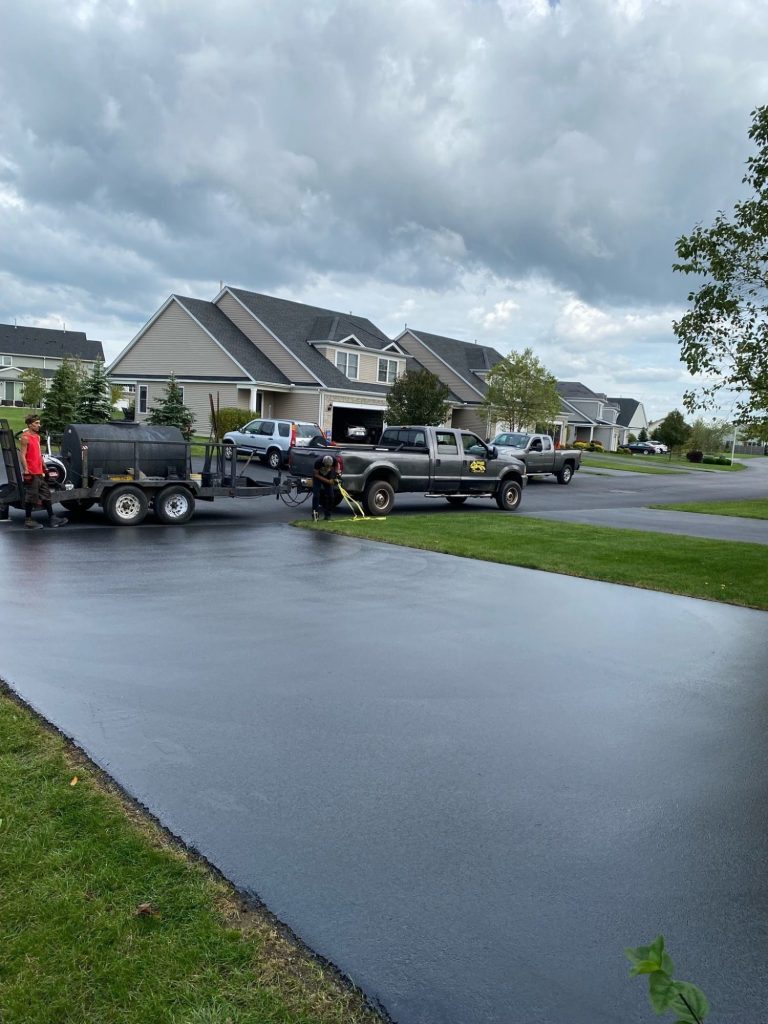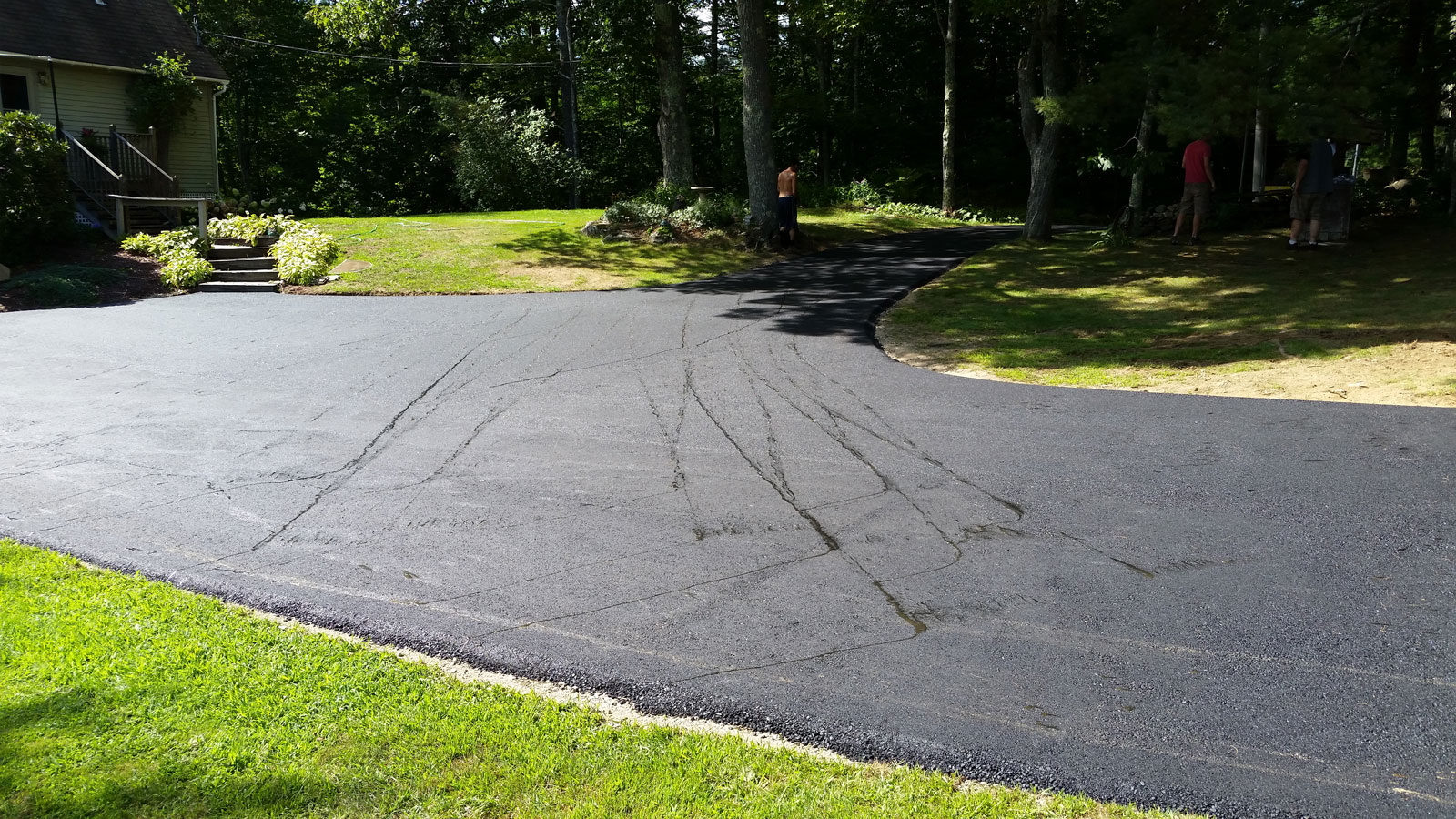Boost Commercial Allure: Warm Mix Asphalt Sealing for Angled Parking Lots
Boost Commercial Allure: Warm Mix Asphalt Sealing for Angled Parking Lots
Blog Article
Hot Mix Asphalt: A Lasting Option for Sidewalk
Hot Mix Asphalt (HMA) has arised as a leading sustainable choice for pavement services, supplying a myriad of environmental advantages and innovative modern technologies. Its capacity to minimize and reuse materials energy usage presents an engaging situation for its fostering in road building and construction tasks. Additionally, the long-term efficiency and longevity of HMA make it a preferred option for framework growth. As the need for green building practices expands, checking out the nuances of HMA's sustainability can provide beneficial insights right into the future of sidewalk solutions.
Environmental Advantages of Warm Mix Asphalt

Moreover, Warm Mix Asphalt assists to minimize metropolitan warmth island effects. Its dark shade soaks up sunlight, lowering the amount of heat mirrored back into the environment compared to lighter-colored pavements. This can reduce ambient temperatures in urban locations, lowering the need for air conditioning and inevitably decreasing energy usage.
In addition, Warm Mix Asphalt adds to boosted stormwater monitoring. Its porous nature allows water to infiltrate the sidewalk and charge groundwater supplies, lowering overflow and the risk of flooding. These ecological advantages make Hot Mix Asphalt a lasting selection for leading roads and highways.
Energy Efficiency in HMA Production
Is power performance an essential aspect in the production of Warm Mix Asphalt (HMA)? Power plays a considerable role in the manufacturing of HMA, affecting both expense and environmental sustainability. One vital element of energy performance in HMA production is the usage of cozy mix asphalt (WMA) technologies.
Furthermore, innovations in plant innovations have caused more energy-efficient HMA manufacturing processes. Modern plants are made with functions like recycled asphalt pavement (RAP) handling capabilities, reliable burner systems, and boosted insulation, all adding to energy financial savings. By enhancing energy use in HMA production, the market can reduce its carbon footprint while keeping premium pavement materials. Power effectiveness is, therefore, a vital consideration in making certain the sustainability of Warm Mix Asphalt production.
Recyclability of Hot Mix Asphalt
The recyclability of Warm Mix Asphalt (HMA) is a critical element of its sustainability and long-term ecological impact. HMA is just one of the most recycled materials in the United States, with over 100 million lots of recovered asphalt sidewalk (RAP) being recycled each year in new pavement building. Reusing HMA supplies numerous environmental benefits, such as minimizing the demand for virgin products, lowering energy usage throughout production, this contact form and decreasing the quantity of waste sent to land fills.
The procedure of reusing HMA entails milling the existing pavement, crushing it into smaller pieces, and mixing it with brand-new accumulation and asphalt binder to develop a recycled mix. This recycled mix can often carry out as well as or perhaps better than conventional HMA, while requiring fewer raw materials and producing reduced greenhouse gas exhausts. By including RAP right into new pavement projects, road agencies can preserve natural deposits, decrease costs, and reduce the environmental impact of roadway building and construction and upkeep activities. In general, the recyclability of HMA plays a significant role in advertising lasting methods within the pavement industry.

Long-Term Performance of HMA
Asphalt pavements demonstrate toughness and resilience over a prolonged period, showing the long-lasting performance of Warm Mix Asphalt (HMA) Furthermore, developments in HMA innovation, such as the use of polymer-modified binders and warm mix asphalt, have additionally boosted the toughness and longevity of HMA sidewalks. By prioritizing top quality building and maintenance methods, HMA proceeds to confirm itself as a sustainable and affordable service for durable sidewalk facilities.

HMA: Durability and Sustainability
Demonstrating both longevity and sustainability, Warm Mix Asphalt (HMA) has come to be a cornerstone in view it now the construction of lasting pavement infrastructures - angled parking. HMA's longevity stems from its capacity to stand up to hefty loads, extreme climate condition, and high traffic volumes, making it a reliable option for streets, highways, and flight terminal paths. The composition of HMA, which usually includes accumulations, binder, and filler, plays a vital role in boosting its durability and resistance to deterioration
Moreover, HMA's sustainability depends on its recyclability and energy-efficient manufacturing procedure. The ability to reuse reclaimed asphalt pavement (RAP) in brand-new HMA mixes minimizes the demand for virgin materials and lessens the ecological effect of sidewalk building and upkeep. Additionally, the power efficiency of creating HMA hinges on its reduced blending temperatures compared to various other sidewalk products, resulting in lowered energy consumption and greenhouse gas emissions.
Conclusion
In final thought, hot mix asphalt (HMA) provides a sustainable remedy for sidewalk with its ecologically friendly attributes. HMA's recyclability, energy effectiveness in manufacturing, and lasting longevity make it an eco-friendly selection for road building and construction.
HMA is one of the most recycled materials in the United States, with over 100 million lots of reclaimed asphalt sidewalk (RAP) being reused yearly in brand-new sidewalk construction.The process of recycling HMA includes milling the existing pavement, squashing it right into smaller pieces, and mixing it with new accumulation and asphalt binder to create a recycled mix.Asphalt sidewalks show durability and resilience over an navigate to this site extensive period, mirroring the lasting performance of Warm Mix Asphalt (HMA) Furthermore, developments in HMA innovation, such as the usage of polymer-modified binders and warm mix asphalt, have actually even more improved the toughness and durability of HMA pavements. The capacity to recycle recovered asphalt sidewalk (RAP) in new HMA blends decreases the need for virgin materials and reduces the environmental effect of sidewalk construction and maintenance.
Report this page